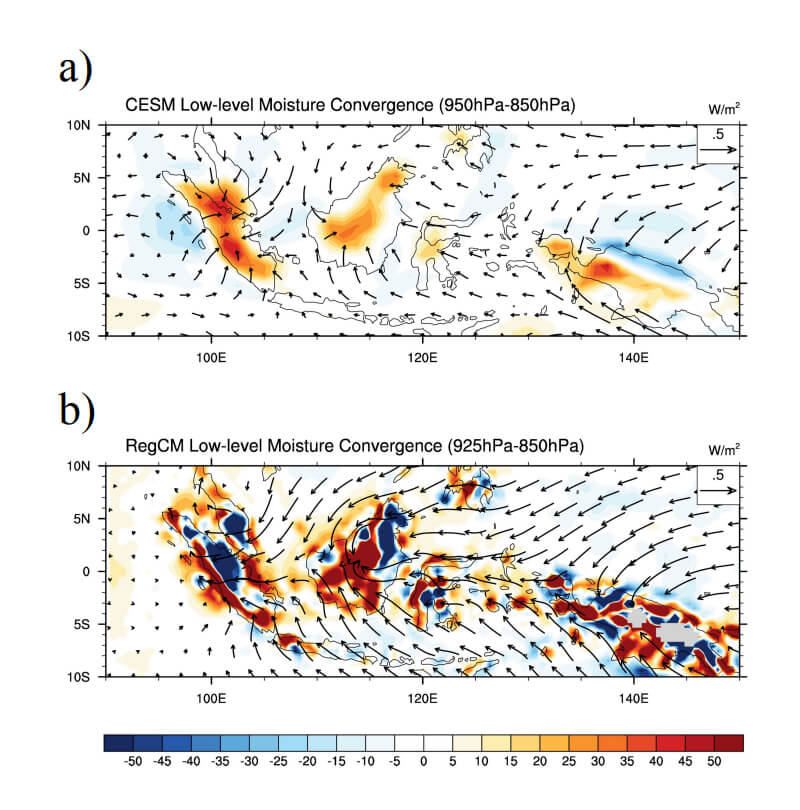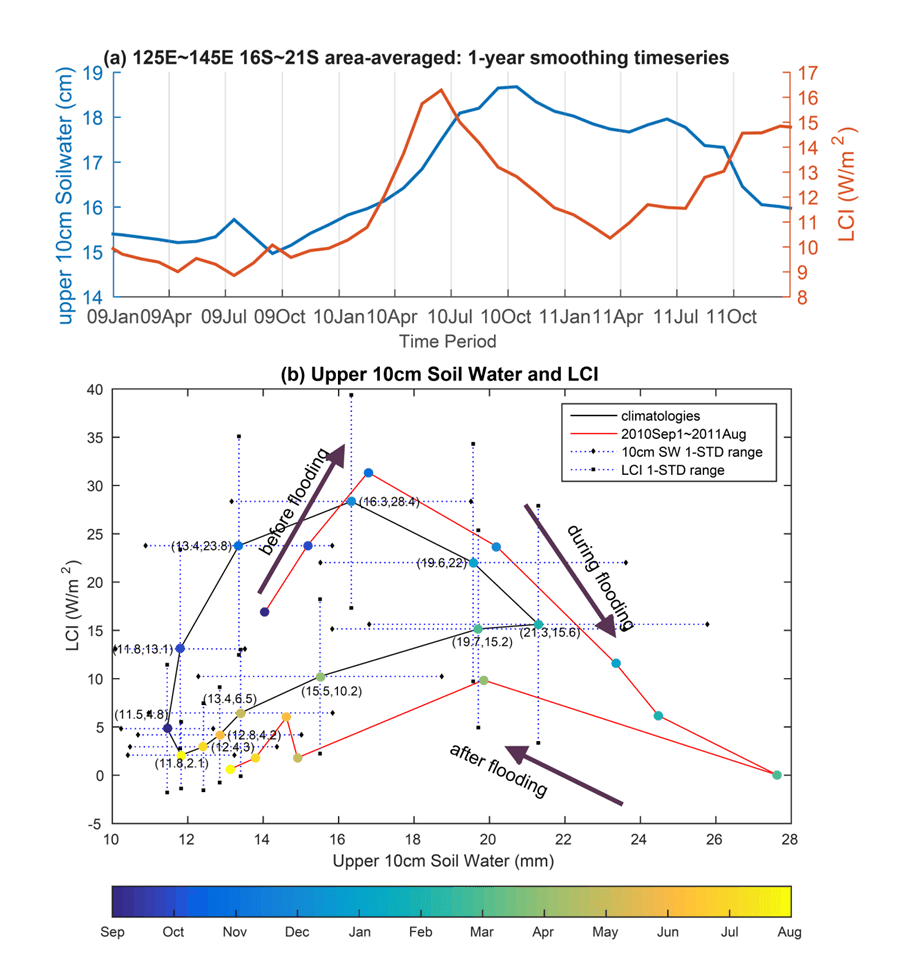Research-interests 1
Impact of land-use changes on the local and regional climates
Tropical deforestation can exert substantial effects on local surface energy and water budgets, and thus on atmospheric stability; these effects combined may yield changes in precipitation. The Maritime Continent (MC) has undergone severe deforestation in the past few decades but received less attention than the deforestation in the Amazon and Congo rainforests. Furthermore, it remains inconclusive on how the precipitation may respond to deforestation in the MC region.
In this study, deforestation numerical experiments are conducted by using the climate model to investigate precipitation responses to MC deforestation. Model results show that deforestation leads to increases in both surface temperature and local precipitation. This study suggested that the disagreement among models in the precipitation responses to the MC deforestation could be attributed to the competition between the local warming and drying effects. For deforestation modeling studies in various regions, the different environments adjacent to the deforested areas (e.g., surrounded by the ocean, forest, or deforested continent) would influence the low-level moisture supply and further result in different precipitation responses to deforestation.
Thus, the results of this study highlight the importance of regional-dependent land surface hydrological processes in the local hydroclimate system. The results also reveal possible reasons for the disagreement among precipitation responses in current model simulations, which provides some clues to improving the climate model parameterizations.

Hsu et al., 2017


Temporal variations of the land-atmosphere coupling strength
Generally, through evapotranspiration, the impact of soil moisture on lower atmospheric temperature is negative. However, soil moisture’s feedback on precipitation is far less straightforward: they can be either positive or negative, depending on local atmospheric stability and the larger scale atmospheric circulation. Moreover, previous studies on land-atmosphere coupling mostly focus on its spatial hotspots, while this study explores the temporal evolution of land surface coupling strength (LCS) during a large-scale flood event in a semiarid region.
The LCS indicates the relationship between soil moisture and latent heat flux, and the spatiotemporal variability in precipitation and soil water strongly affects LCS variability. The LCS is usually positive in the semiarid climate, where evapotranspiration (ET) occurs under the soil moisture–limited regime and thus increases with soil moisture. However, our analyses of combined land surface modeling and observational datasets show high temporal variability of LCS in the extreme flood event followed by a drying period. The wet regions transferred the ET regime from the soil moisture–limited to the transition section, weakening the linear growth of ET with soil moisture, which resulted in the decline of LCS. The LCS remained weak until the flood retreated and the soil water approached the pre-storm stage.
Such temporal variation of the LCS has important implications for realistic land-atmosphere coupling parameterization and, consequently, improving sub-seasonal to seasonal climate forecasts. This work contributes to enhancing our understanding of soil moisture-precipitation spatial coupling, and exposes the complex nuances of these land-atmosphere interactions.

Lo et al., 2021

